April 6, 2019 - Whether they live in the city or way out west, horse enthusiasts have plenty of options for finding new ground for riding their horses. Public lands across the country are outstanding places to explore with your four-legged friend. Even if you don’t own a horse, some public lands allow outfitters to take people on horseback adventures through beautiful landscapes and historic locations.
When planning your trip, make sure that the horses you bring are accustomed to each other and able to deal with unusual situations or environments. Horseback riding is a fun and rewarding experience, but a spooked or green horse can injure you and others. Remember to check the regulations regarding vaccinations or testing for horses, waste disposal requirements and designated horse trails.
Now check out some of our favorite places for you and your thousand-pound pal to explore.
Upper Missouri River Breaks National Monument
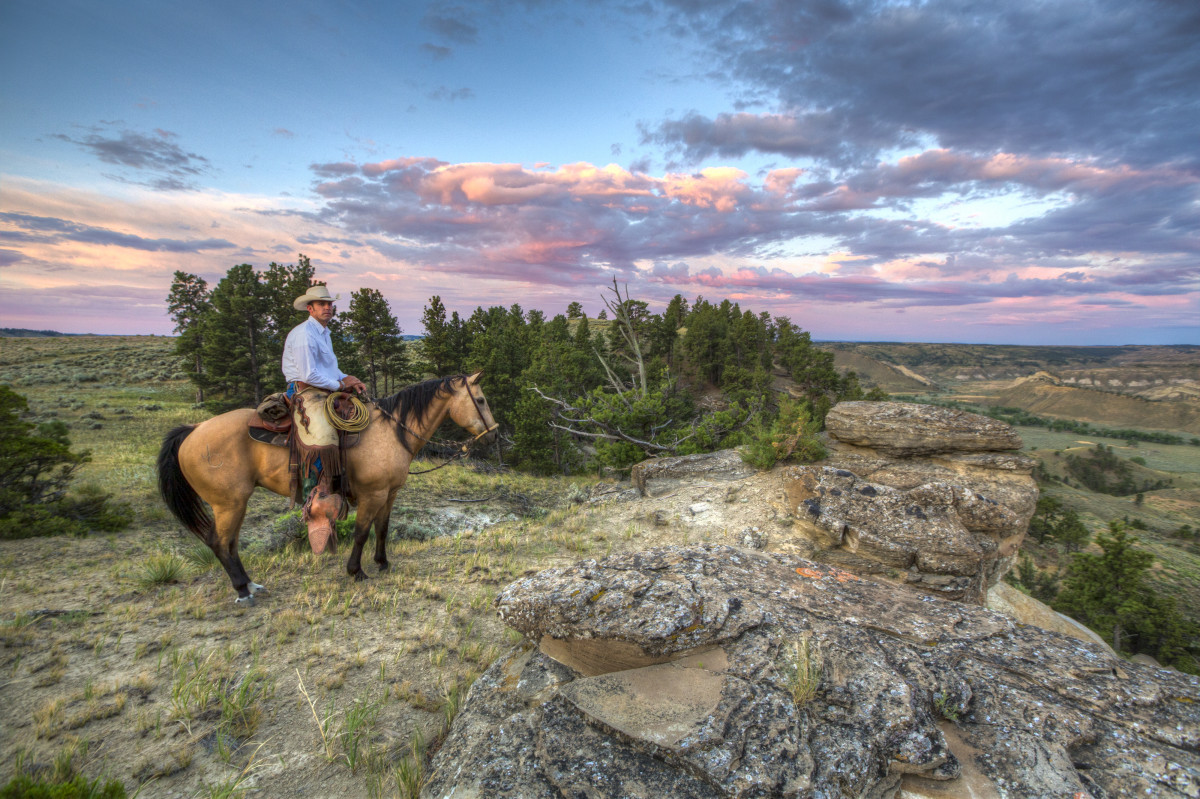 A cowboy on his buckskin ranch horse pauses to reflect in this photo in Upper Missouri Breaks National Monument. Photo by Bob Wick, Bureau of Land Management.
A cowboy on his buckskin ranch horse pauses to reflect in this photo in Upper Missouri Breaks National Monument. Photo by Bob Wick, Bureau of Land Management.
Upper Missouri River Breaks National Monument in Montana is a wild and remote land. Encompassing 149 miles of the Upper Missouri River, the monument includes segments of the Lewis and Clark National Historic Trail. Lewis and Clark spent three weeks exploring various points at this section of the Missouri River. The river is the second longest river in the United States at 2,500 miles and this section boasts a diverse fish population and flows past rugged cliffs and lush grasslands. Today, the Bureau of Land Management preserves stretches of the Lewis and Clark Trail that look essentially the same as when Lewis and Clark first saw them. The only remnant of the expedition is Captain Clark's signature at Pompey’s Pillar National Monument in Montana. Find peace and quiet in solitude under the Big Sky with your equine friend.
Assateague Island National Seashore
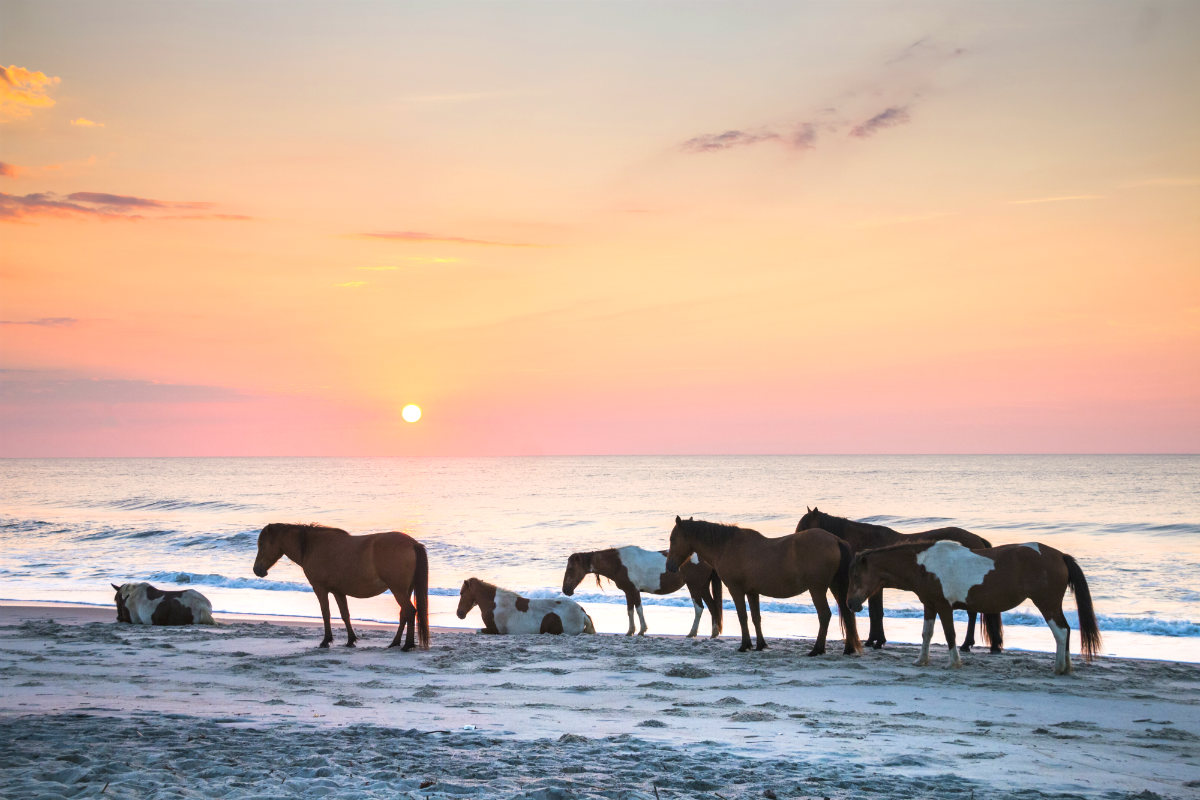 Warm colors greet a new day for these Assateague ponies. Photo by Nathaniel Gonzales (www.sharetheexperience.org).
Warm colors greet a new day for these Assateague ponies. Photo by Nathaniel Gonzales (www.sharetheexperience.org).
Whether you love the sand and sea, or simply want to catch a glimpse of the famed wild ponies on Assateague Island, a visit to Assateague Island National Seashore is time well spent. A local legend, popularized by Marguerite Henry’s book, Misty of Chincoteague, says that the Assateague horses were survivors of a shipwreck off the Virginia coast. However, no records have been found to prove it. The probable origin story is far less romantic: livestock owners in the late 17th century brought their horses to barrier islands like Assateague and turned them loose to avoid fencing laws and livestock taxes. Each year, “saltwater cowboys” round up the wild horses and swim them across the channel to Chincoteague where some are sold in an auction benefiting the Chincoteague Volunteer Fire Company and raising money for the veterinary care of the remaining ponies. Visitors aren’t permitted to chase, catch, ride or harass the ponies. You may look at them and take pictures of them, but if you want to ride here, you’ll need to bring your own horse.
Maston and Juniper Trailheads
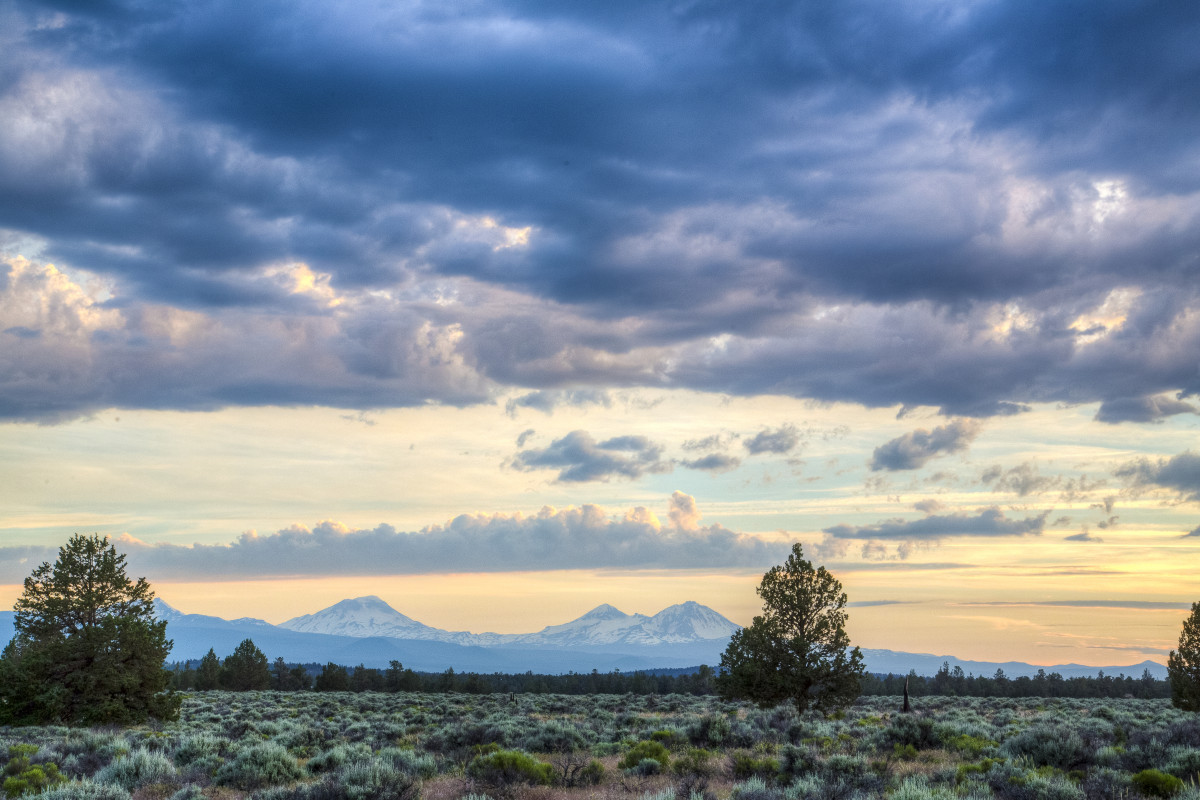 Hues of green, grey and blue dominate this view of the Oregon landscape. Photo by Bob Wick, Bureau of Land Management.
Hues of green, grey and blue dominate this view of the Oregon landscape. Photo by Bob Wick, Bureau of Land Management.
Head to the Pacific Northwest to ride the Maston and Juniper Trailheads in Oregon. These outstanding trails cross over 4,000 acres hidden along the eastern side of the Cascade Mountains. From straight shots through sagebrush to winding paths around basalt crags, to a majestic view of the mighty Deschutes River, you will find something for every rider’s level. Perhaps the best part of this gem is that the trails are open year-round, so there is no need to lament the changing seasons for you and your trusty steed.
San Diego National Wildlife Refuge
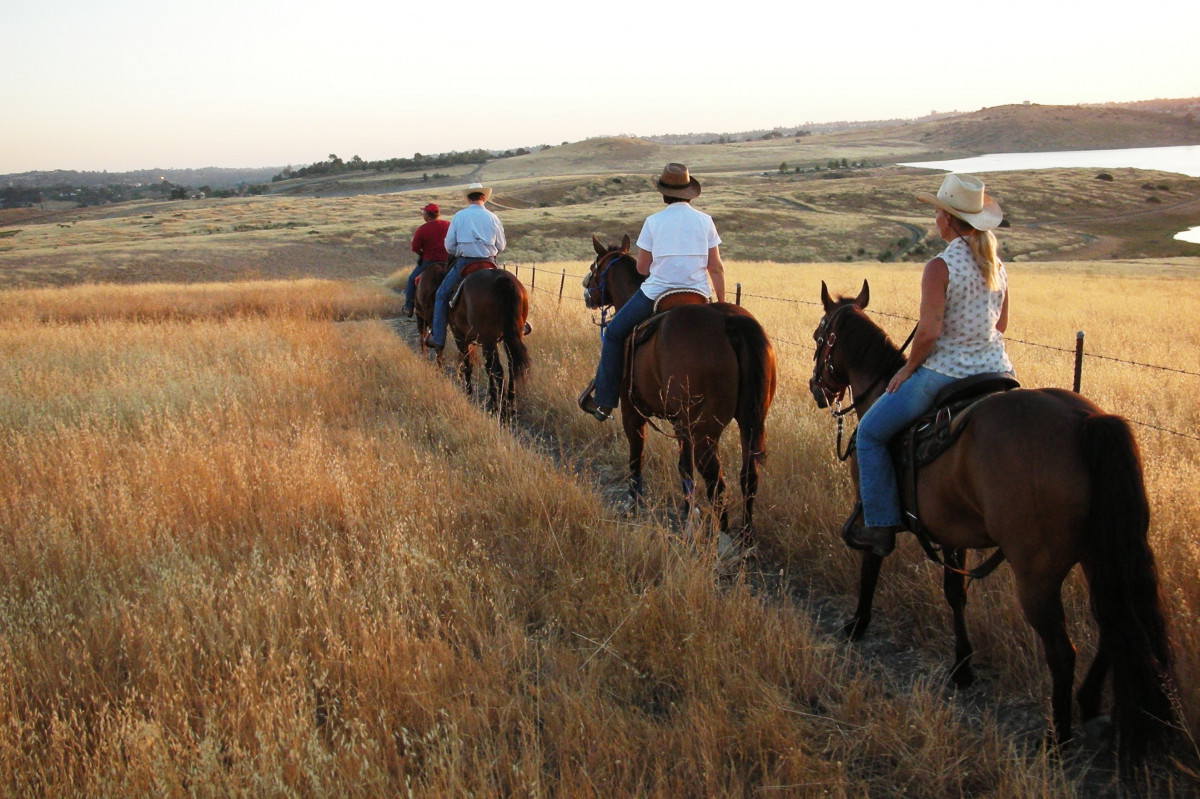 Horseback riders enjoy an evening ride on one of the trails at San Diego National Wildlife Refuge. Photo by Ken Corey, U.S. Fish and Wildlife Service.
Horseback riders enjoy an evening ride on one of the trails at San Diego National Wildlife Refuge. Photo by Ken Corey, U.S. Fish and Wildlife Service.
Ready for some more fun in the saddle? A limited number of wildlife refuges allow horses. The ones that do offer fresh air and the chance to glimpse a variety of wildlife. San Diego National Wildlife Refuge in California has trails leading through marshes, sage scrub, rolling hills and river valleys. Visitors should keep binoculars in their saddlebags to get closer looks at endangered birds and colorful butterflies.
Shenandoah National Park
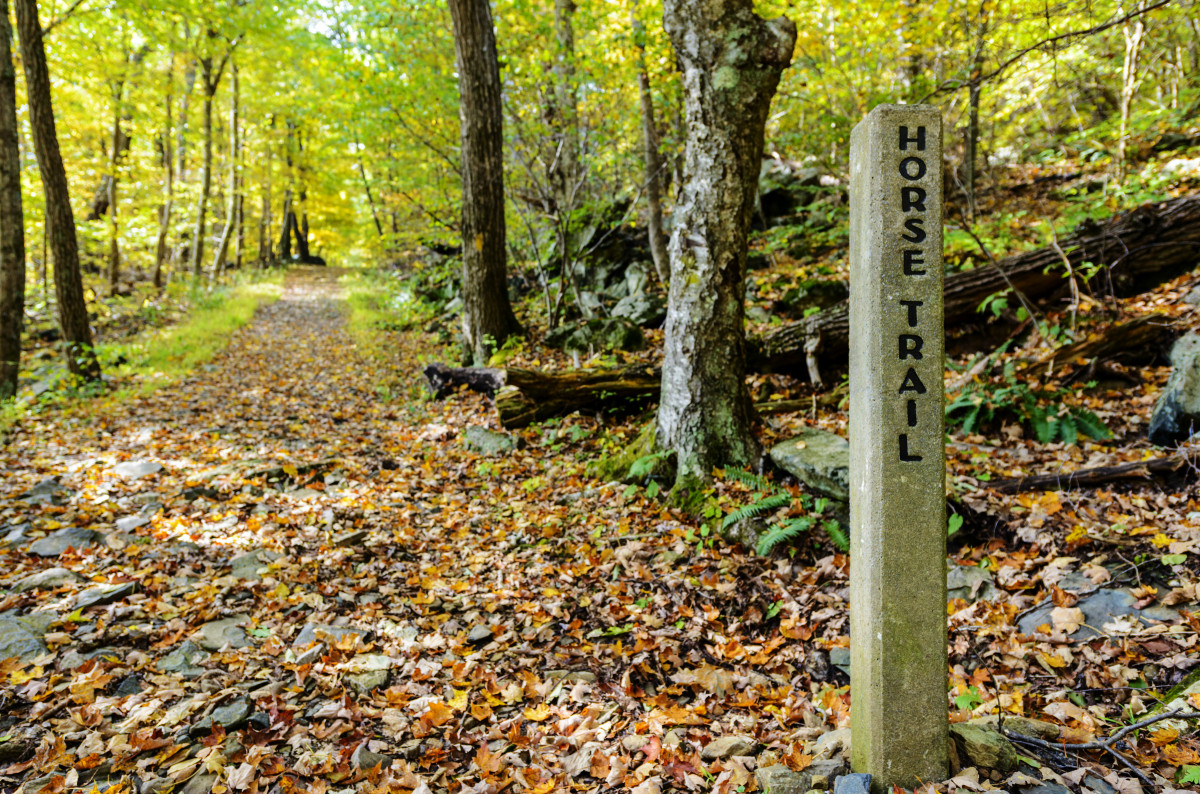 A signpost marks a trail through trees at Whiteoak Canyon. Photo by N. Lewis, National Park Service.
A signpost marks a trail through trees at Whiteoak Canyon. Photo by N. Lewis, National Park Service.
At Shenandoah National Park in Virginia, you can ride through woods and over streams. Horse-accessible trails are maintained by employees and marked clearly by signs. With trails varying in difficulty and distance, this is the perfect place for any horse or rider. There is a variety of wildlife in the park, including bear and deer, so keep your camera handy for a quick snapshot of a stealthy bobcat. And of course, the mountain views are spectacular.
Yellowstone National Park
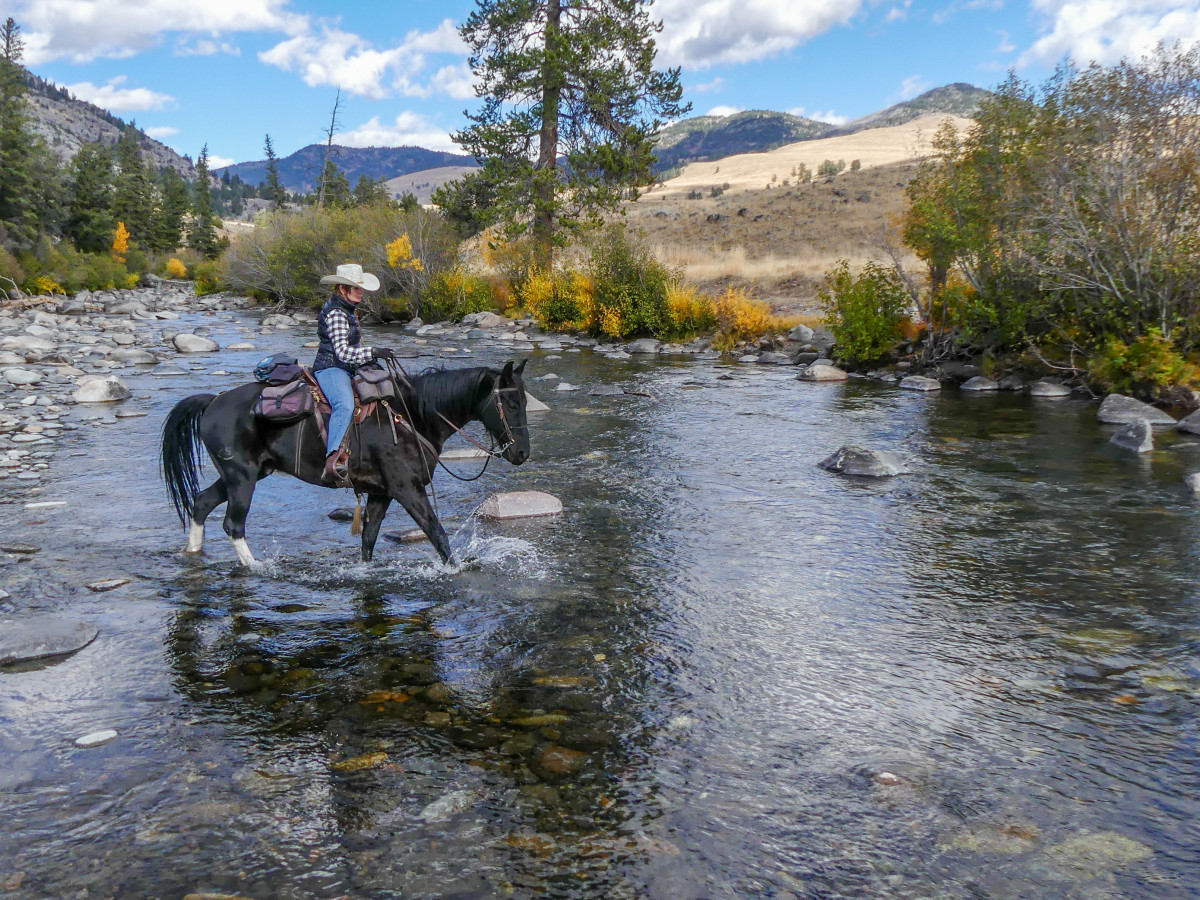 Horse and rider cross the crystal-cold Hellroaring Creek along the Yellowstone River Trail. Photo by Sherrie and Ron White, National Park Service.
Horse and rider cross the crystal-cold Hellroaring Creek along the Yellowstone River Trail. Photo by Sherrie and Ron White, National Park Service.
Another great national park to ride in is Yellowstone. Located in Montana, Idaho and Wyoming, it is the oldest U.S. national park. There is plenty of beautiful terrain to cover, so make sure you plan ahead to maximize your viewing pleasure. From geysers, hot springs and thundering waterfalls to rugged cliffs, gentle valley trails and grassy green basins, Yellowstone certainly has much to offer for the natural sights. Wildlife sightings are plentiful, so be prepared to deal with a spooking horse.
St. Marks National Wildlife Refuge
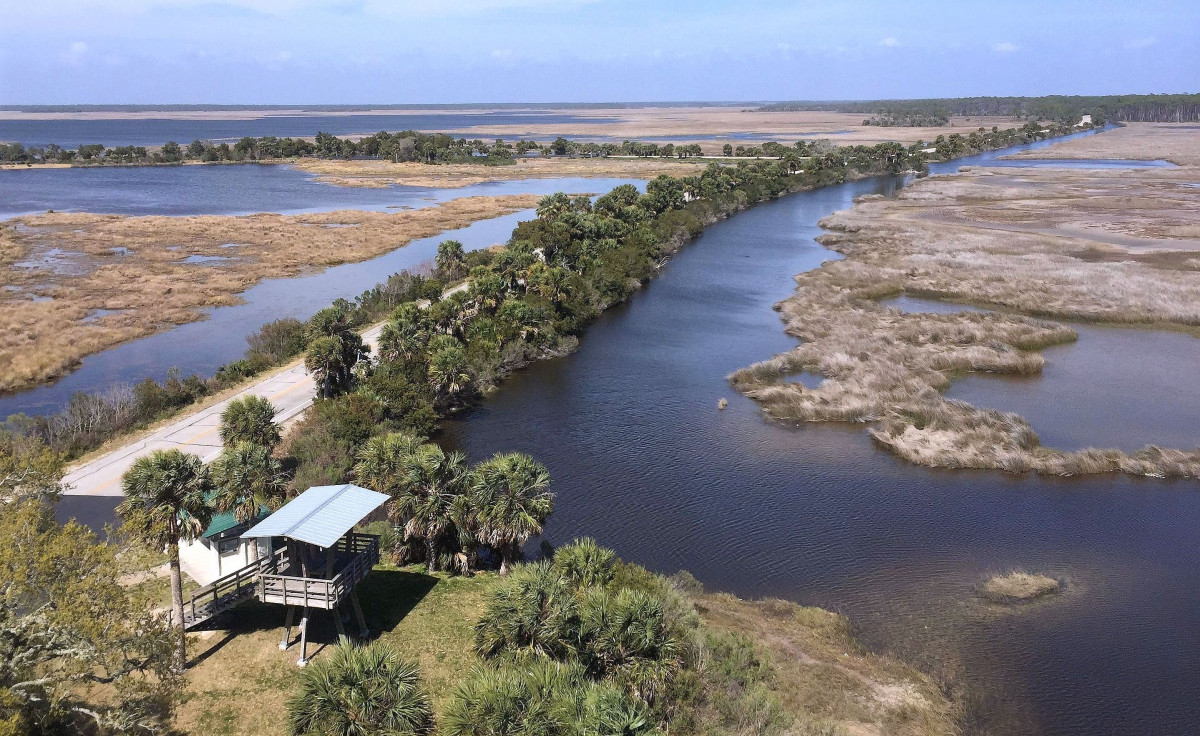 An aerial view of St. Marks National Wildlife refuge provides perspective on the unique area it encompasses. Photo by Valerie Fellows, U.S. Fish and Wildlife Service.
An aerial view of St. Marks National Wildlife refuge provides perspective on the unique area it encompasses. Photo by Valerie Fellows, U.S. Fish and Wildlife Service.
Ride along elevated levees flanked by palm trees at St. Marks National Wildlife Refuge on the Gulf Coast of northwest Florida. Your horseback adventure through one of the oldest refuges in the National Wildlife Refuge System will overlook wilderness saltmarshes and lakes. You could see bear, deer, bobcat, fox squirrels and a variety of beautiful birds. The park is most pleasant for riding during the late fall, winter and early spring months, from October through March when it’s not too hot or buggy.
Bryce Canyon National Park
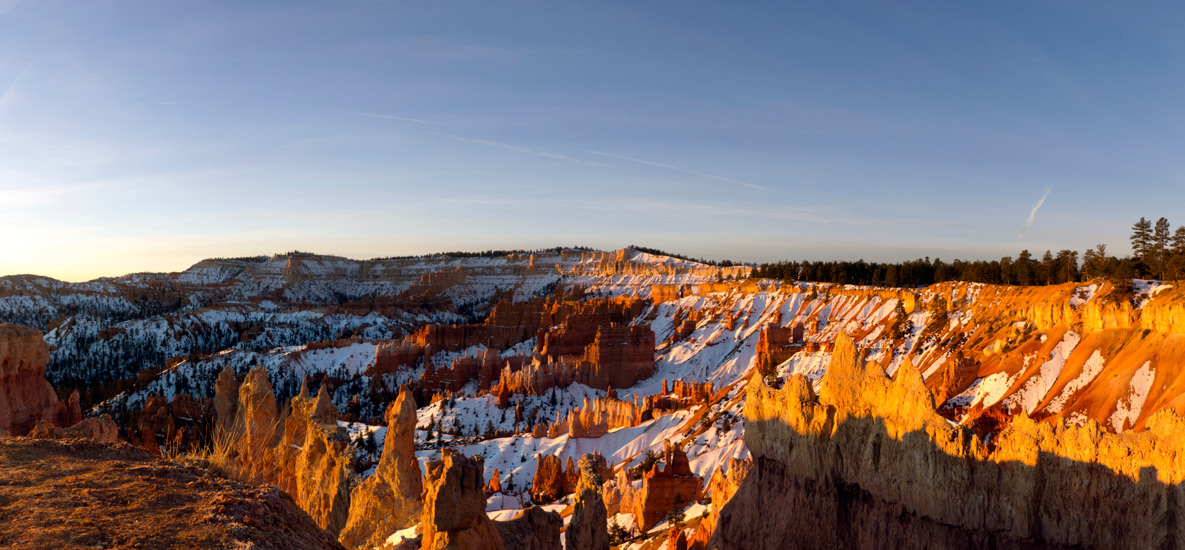 A new day dawns at Sunrise Point. Photo by Brian B. Roanhorse, National Park Service.
A new day dawns at Sunrise Point. Photo by Brian B. Roanhorse, National Park Service.
If you’re in the mood for breathtaking views and fascinating red rock formations, Bryce Canyon National Park is the place to be. Located in southern Utah, Bryce Canyon has several horse-designated trails with stunning views of the park’s signature red hoodoos. It’s also worth getting up before the birds to witness a spectacular sunrise at aptly-named Sunrise Point. To avoid other riders or conflicts on the trail, call to reserve time with your horse on the rugged winding trails.
Manassas National Battlefield Park
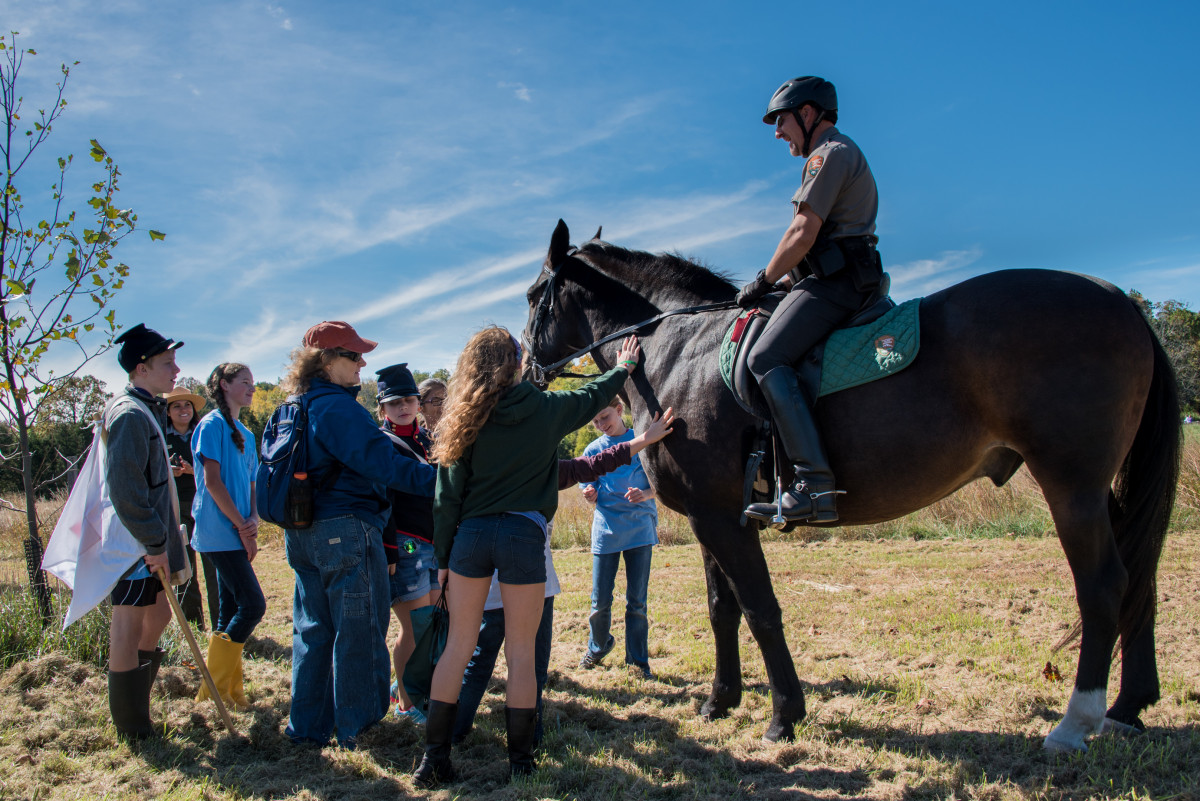 Children get up close and personal with a park ranger’s horse. Photo by National Park Service.
Children get up close and personal with a park ranger’s horse. Photo by National Park Service.
Trace the hoofprints of history to Manassas National Battlefield Park in Virginia where “Southern victories tested Northern resolve” during the Civil War. Horses were used during both the First and Second Battles of Manassas (also known as Bull Run) as cavalry steeds and to pull supply wagons. Today, the cannon fire and shouts of terror are only echoes of history. Both people and animals explore the rolling fields and forests in peace. With 21 miles of horse trails winding past various memorials and important battle sites, riding helps immerse visitors in this dark chapter of our nation’s history.
Mingo National Wildlife Refuge
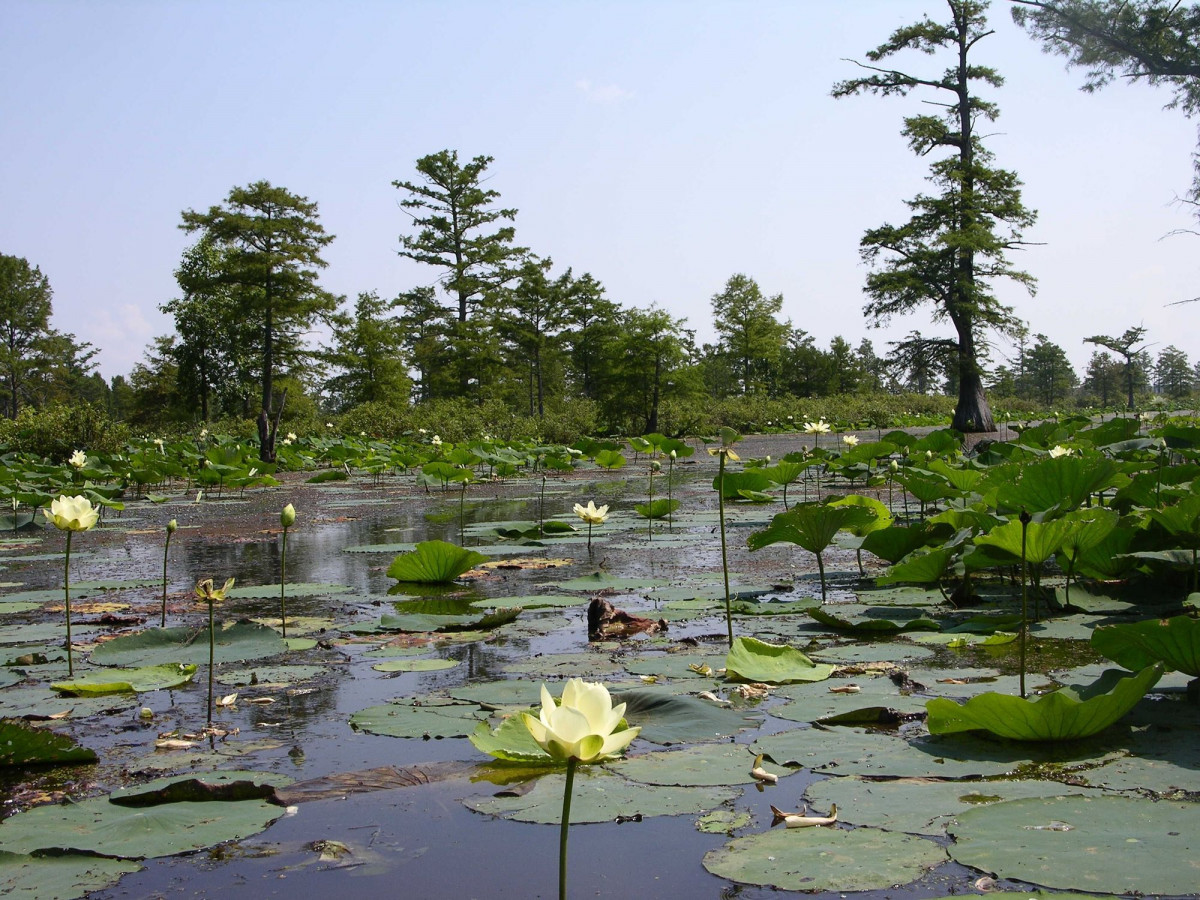 Mingo National Wildlife Refuge is a great place for viewing unusual marsh habitats. Just be sure to stay on the designated horse trails! Photo by U.S. Fish and Wildlife Service.
Mingo National Wildlife Refuge is a great place for viewing unusual marsh habitats. Just be sure to stay on the designated horse trails! Photo by U.S. Fish and Wildlife Service.
Head over to Missouri for a jaunt through woods and marshes. Horseback riding is offered during daylight hours on select roadways at Mingo National Wildlife Refuge. Depending on the season, watch for majestic bald eagles and sneaky river otters. As you ride, you can also check out the various wildflowers and waterfowl that call this refuge home.
Pony Express National Historic Trail
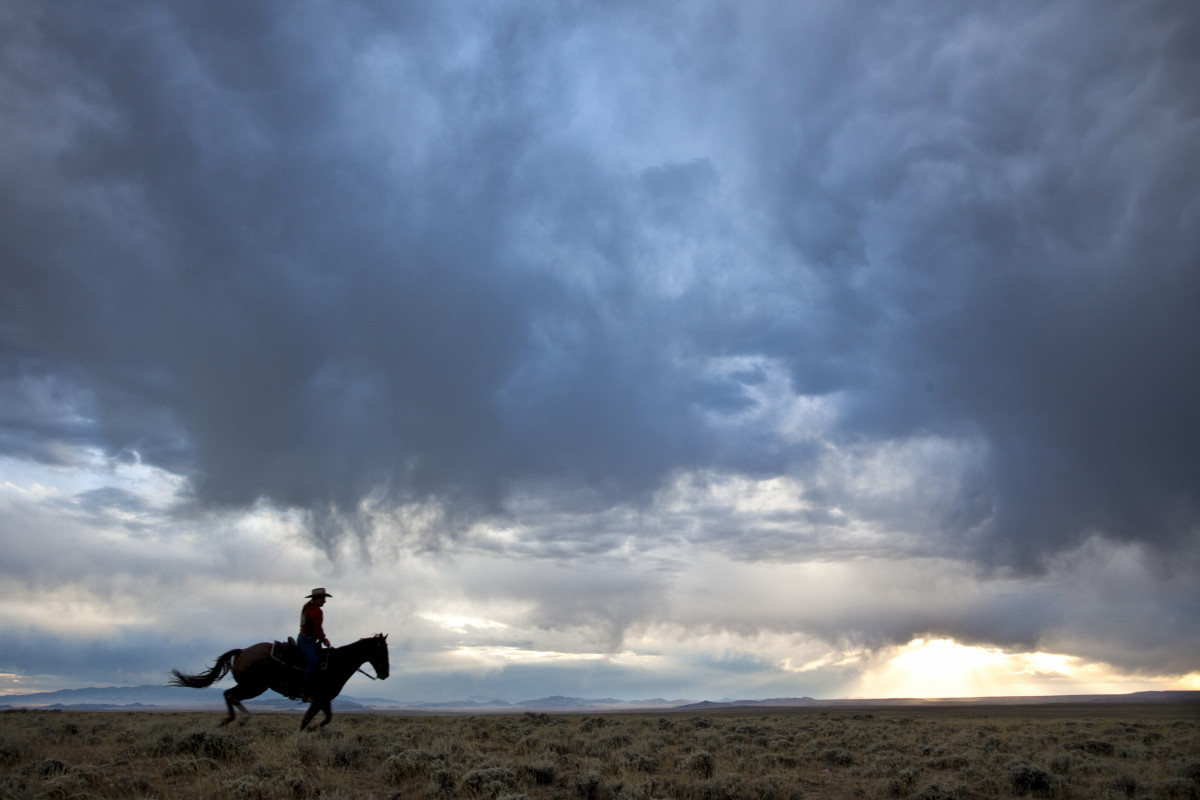 A lone rider lopes under a stormy sky in Wyoming. Photo by Bob Wick, Bureau of Land Management.
A lone rider lopes under a stormy sky in Wyoming. Photo by Bob Wick, Bureau of Land Management.
The Pony Express National Historic Trail follows the mail route that was in service during the early 1860s. This was a delivery system with young cowboys as the couriers. They’d ride at breakneck speeds in a relay style, with each new station offering a new horse and sometimes a new rider. It was this method that carried the mail through California, Nevada, Utah, Colorado, Wyoming, Nebraska, Kansas and Missouri before the days of the telegraph. Today, you can ride along different portions of the trail while keeping in mind the many dangers that these brave horsemen faced, from sudden storms and animal attacks to vicious outlaws and creeping exhaustion.
Big South Fork National River and Recreation Area
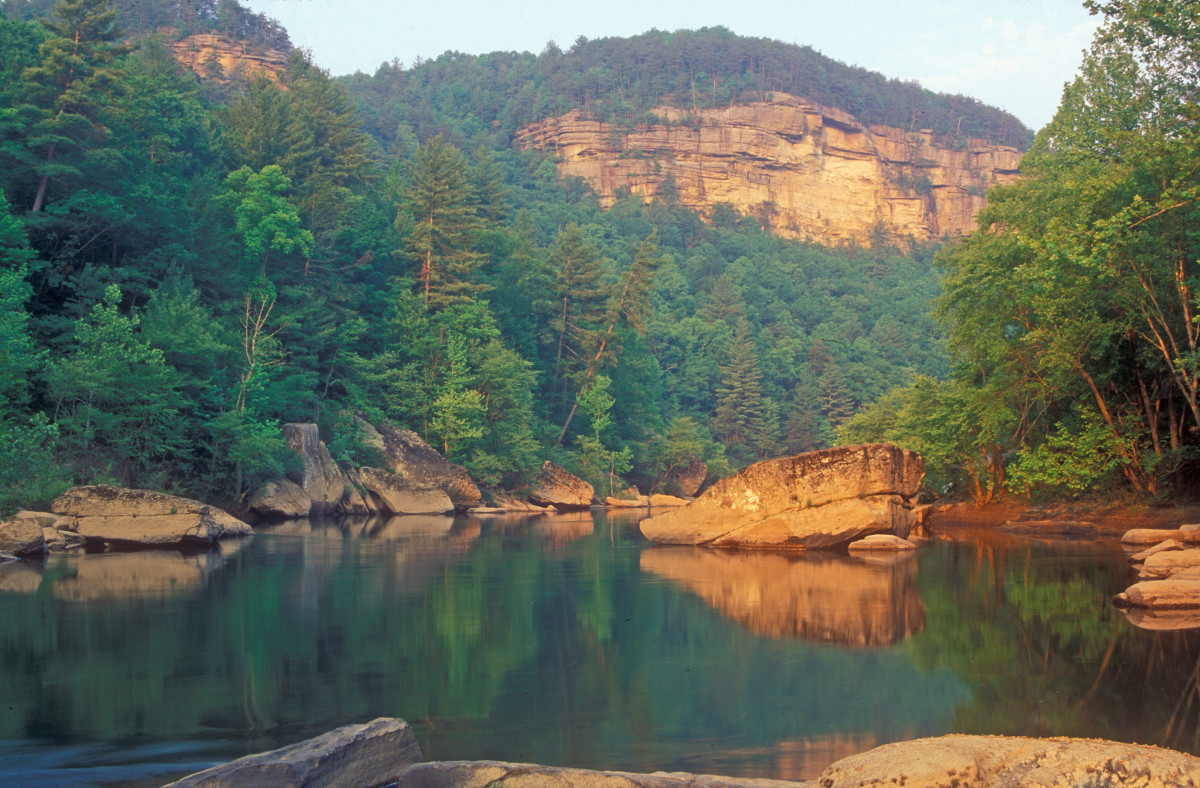 Trees and cliffs cast a blurry reflection on the Big South Fork River. Photo by National Park Service.
Trees and cliffs cast a blurry reflection on the Big South Fork River. Photo by National Park Service.
One of the most popular activities at Big South Fork National River and Recreation Area in Kentucky and Tennessee is horseback riding. With 212 miles of clearly marked horse trails ranging in difficulty from an afternoon ride to a several days-long pack trip, it’s easy to see why! The park is located on some of the most rugged terrain of the Cumberland Plateau, offering views of unique sandstone cliffs, arches and chimneys. Plus, there are nearby stables and camping facilities equipped for boarding horses overnight.
Natchez Trace Parkway
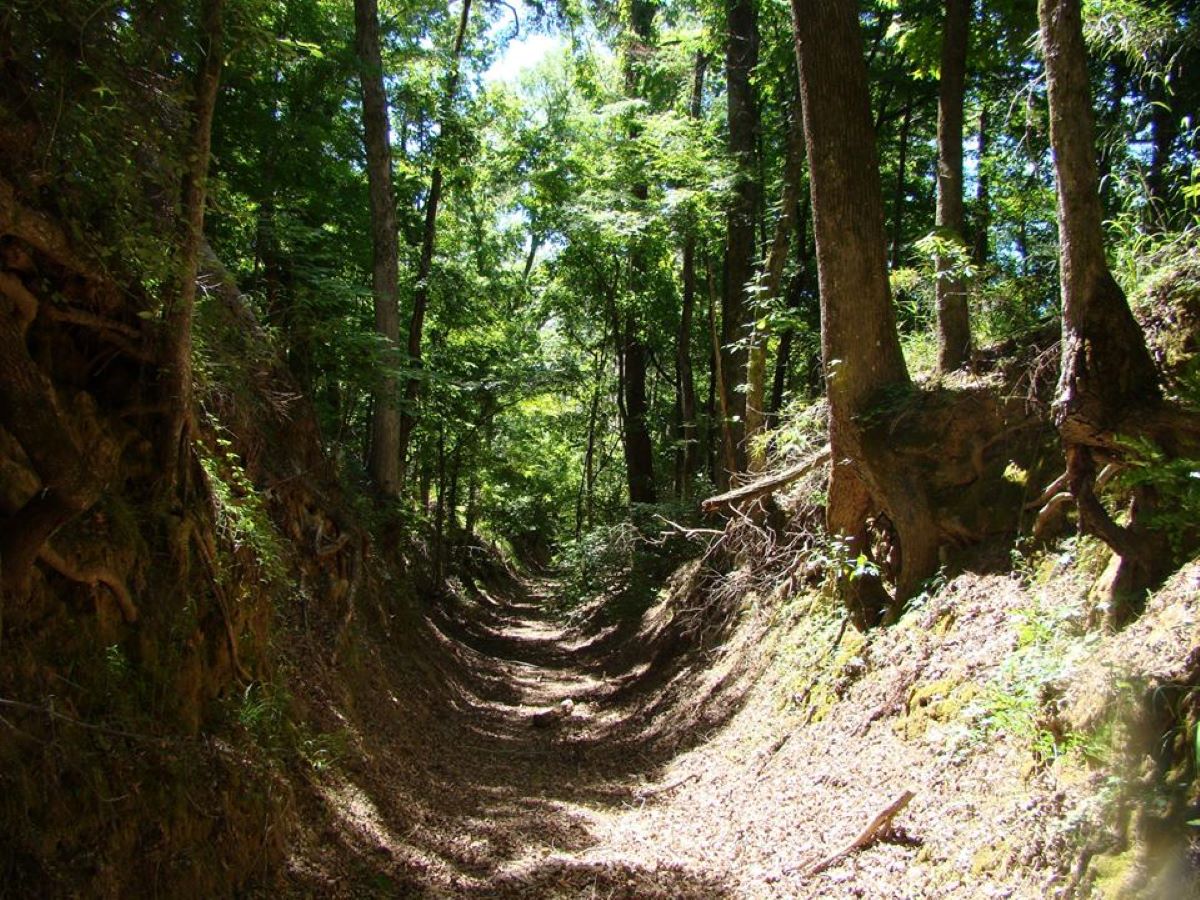 Parts of the Trace are sunken after hundreds of years of animal and human traffic. Photo by National Park Service.
Parts of the Trace are sunken after hundreds of years of animal and human traffic. Photo by National Park Service.
Natchez Trace Parkway in Mississippi and Tennessee has four excellent horse trails. Roughly following the “Old Natchez Trace”, this is a route through history dates back thousands of years. From ancient Native American mounds and cypress swamps to a travel corridor used by pioneers and soldiers, the Natchez Trace has a many-tiered history. This, combined with the beautiful scenery, contributes to an enjoyable and educational horseback ride.
Lake of the Arbuckles, Chickasaw National Recreation Area
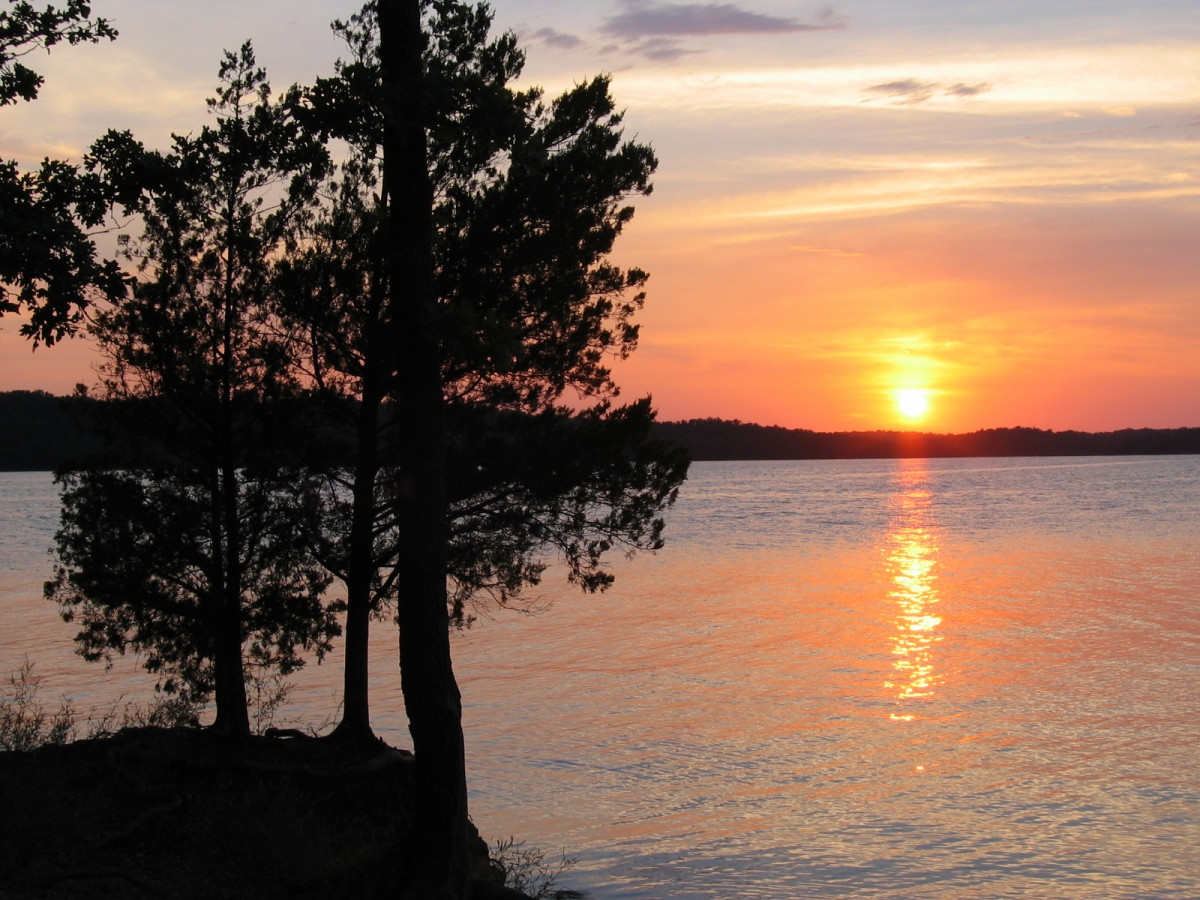 Vivid colors streak the sky over the Lake of the Arbuckles in this sunset photo. Photo by National Park Service.
Vivid colors streak the sky over the Lake of the Arbuckles in this sunset photo. Photo by National Park Service.
Established by Interior’s Bureau of Reclamation in 1966, the Lake of the Arbuckles in Oklahoma was created when the 2,700 foot wide Arbuckle Dam was built across three creeks. The lake and surrounding lands now provide an extensive recreation area. On the Rock Creek Multi-Use Trail, deciduous forests meet western mixed-grass prairies. The trail wanders along the lake before cutting through the forest to meet the open plain. With water, trees for cover, and grass abounding, riders can enjoy a peaceful ride in sun and shade.
While these are certainly not all the public lands available for your equestrian enjoyment, they are excellent places to start. And do you find yourself wanting to own a bit of the West in the form of a wild mustang? Look no further than the Bureau of Land Management’s own wild horse and burro adoption and sale program. Now get out there, saddle up and hit the trail.
Source: DOI








